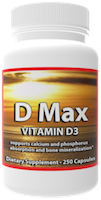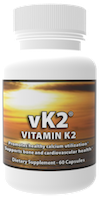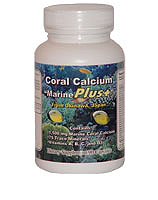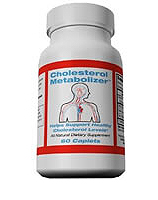Menu
-
About Seaweed
- What is Seaweed?
- Seaweed History
- Seaweed Benefits
- Seaweed Contains Virtually No Oxalates
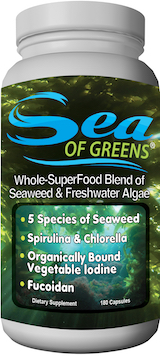
Sea of Greens® faq
Q:
What is Sea Of Greens®?
A:
Sea Of Greens® is a 100% natural, Whole-Superfood supplement, combining an optimal blend of edible sea vegetables (from the pristine northern Atlantic Ocean) with Freshwater algae. Sea Of Greens® Contains 5 Species of seaweed (Bladderwrack, Wakame, Rockweed, Sea Lettuce and Dulse) + 2 species of freshwater algae (Spirulina & Chlorella). It is a rich source of organically bound vegetable iodine as well as fucoidan. Each bottle contains (180) vegetable capsules (a 30 day supply).
Q:
What are the Benefits of Sea Of Greens®?
A:
Most people's bodies are pH imbalanced and highly acidic, which causes a long list of ailments. Sea Of Greens® feeds the cells and blood, YOUR BODY does the rest, It KNOWS HOW!
Q:
Why hasn't my M.D. recommended Sea Of Greens®?
A:
Most M.D.'s know very little about natural health and nutrition. How can these people fix your body? They can't even fix their own bodies. M.D.'s in the U.S. die at an average age of 62. Not only that, the cure for De-Generation or (Degenerative Disease), is RE-Generation. Most M.D.'s just don't understand that simple concept.
Exactly what can and does, an M.D. provide you that will Re-Generate your cells? The answer is . . . ABSOLUTELY NOTHING.
Q:
Can Sea Of Greens® be taken with other supplements, drugs or foods?
A:
Yes, Sea Of Greens®is a 100% FOOD supplement. Its not the Sea Of Greens® people should worry about, but the chemicals and toxins in their diet and environment.
Q:
When will I feel a difference? How will I know its working?
A:
Well, how long after eating a meal, do you know its working? Sea Of Greens® is not a drug and so shouldn't be viewed as a pill that makes you feel something. True biological health is long term and sometimes subtle.
Q:
Is Sea Of Greens®like fish oil pills . . . in that when you swallow them you burp up the fishy taste?
A:
No not at all. Whole Sea Of Greens® is vegetation, not oil from a fish. It is quickly absorbed in the stomach and used immediately. Still, if we take or eat anything with carbonated drinks, burping up the taste of the food is normal.
Q:
Can Super Sea Of Greens® be taken by children?
A:
Absolutely. It is a wonderful source of minerals, many of which are extremely important to a growing child's proper development. 1-3 capsules a day for children 4-12. It is 100% vegetable and there can be no overdose. Japanese children eat 4 grams a day, and that equals 8 Sea Of Greens® veggie-caps. NOTE: For toddlers, the capsules can be opened and the organic Sea Of Greens® can be sprinkled on food, or mixed into foods. Its interesting how children like the taste of Sea Of Greens® and somehow know its good for them!
Q:
Can pregnant mothers and Seniors take Sea Of Greens®?
A:
Yes they can as it is 100% organically balanced plant material.
However, it is always a good idea to consult with your physician before taking any supplement.
Eating Sea Of Greens® IS eating right.
Q:
Is Sea Of Greens® tested for pollution?
A:
Yes of course. There are tests run on every batch to insure its safety and effectiveness. Our air, food and water have more toxins than ever before. Sea Of Greens® actually helps your cells tolerate and eliminate the more than 75,000 chemicals created in the past 100 years, which are found everywhere. Sea Of Greens® is also tested for heavy metals and bad bacteria. We Farm the Sea off the coast northern Atlantic Ocean. No industry, no pollution. Sea Of Greens® doesn't absorb toxic amounts of anything, although fish can. Sea Of Greens® is also pH balanced, unlike most name brand vitamins.
Q:
What is Sea Vegetation and What is it's History?
A:
Seaweed is actually a nutritious and mult1-talented vegetable. Seaweed has been used in many places for many uses for thousands of years. Seaweed is a type of algae. Algae came to existence about three and a half billion years ago. Colonies of algae started to grow about 1 billion years ago.
Seaweed as a staple item of diet has been used in Japan and China since prehistoric times. In 600 BC, Sze Teu wrote in China, "Some algae are a delicacy fit for the most honored guests, even for the King himself." Some 21 species are used in everyday cookery in Japan, six of them since the 8th century. Seaweed accounts for some 10% of the Japanese diet and seaweed consumption reached an average of 3.5 kg per household in 1973, a 20% increase in 10 years.
Sea of Greens ® Packages
Contains:
180 capsules per bottle (30 day supply)
Suggested use:
As a dietary supplement for adults, take six capsules per day
(preferably three capsules, twice per day).

- 1 bottle
- $39.95
- 2 bottles $38.95 each
- $77.90
- 3 bottles $37.95 each
- $113.85
- 6 bottles $36.95 each
- $221.70
- 12 bottles $35.95 each
- $431.40
Sea of Greens® Supplement Facts
| Serving Size: 3 Capsules
Servings per container: 60 |
||
| Amount per 2 Servings (suggested daily usage) | % Daily Value | |
|---|---|---|
| Bladderwrack (Fucus Vesiculosis) | 750 mg | * |
| Wakame (Alaria Esculenta) | 675 mg | * |
| Rockweed (Ascophyllum Nodosum) | 200 mg | * |
| Sea Lettuce (Ulva Lactuca) | 35 mg | * |
| Dulse (Palmaria Palmata) | 35 mg | * |
| Spirulina (Arthrospira Platensis) | 1,050 mg | * |
| Chlorella (Chlorella Vulgaris) | 1,050 mg | * |
Other ingredients: 100% Vegetable capsule, L-Leucine
Directions
As a dietary supplement for adults, take six capsules per day
(preferably three capsules, twice per day).
Disclaimer
Statements contained herein have not been evaluated by the Food and Drug Administration. These products are not intended to diagnose, treat and cure or prevent disease. Always consult with your professional health care provider before changing any medication.
Other Products Available from: NHS Global Distributors LLC
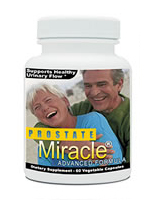
Prostate Miracle®
Trusted by thousands to support healthy urinary flow and prostate health.
read more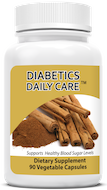
Diabetics Daily Care™
A Unique, 100% Natural Formula, which supports healthy blood sugar. Diabetics Daily Care™ is the most powerful formula of its kind.
read more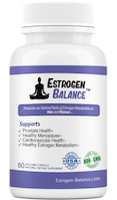
Estrogen Balance®
A natural formula for Men & Women, combining: D.I.M., Quercetin and Flaxseed.
read more
Pectin Plus®
Supports healthy detoxification, healthy blood pressure, healthy cholesterol levels and prostate health
read more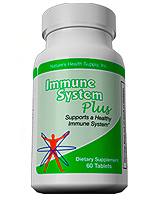
Immune System Plus™
An immune system support formula based on Beta Glutan, which is unsurpassed in it's ability to help support a healthy immune response.
read moreInformation
Contact
255 Rivertown Shops Dr.
Suite 102 PMB 128
Saint Johns, FL 32259
International: 1.805.322.0005
Thank you for visiting Sea-Vegg.us
This information here within is designed to provide accurate information in regard to the subject matter covered. It is provided with the understanding that NHS Global Distributors, Inc. is not engaged in rendering medical advice. If expert assistance is required, the services of a competent medical professional should be sought. These statements have not been evaluated by the Food and Drug Administration. These products are not intended to diagnose, treat, cure or prevent any disease. Always read and follow manufacturer's directions that come with this product.
You are protected by the FDA Dietary Supplement and Nonprescription Drug Consumer Protection Act
please call 877.965.2140 or Click here to report any Adverse Reaction with Sea of Greens.




